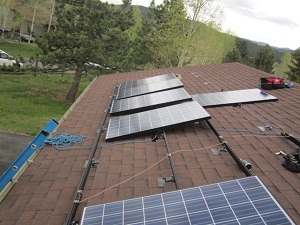GE working to cut installed cost of rooftop solar to $4 a watt—in 2012
 General Electric’s (NYSE: GE) been increasing its focus on solar and how to bring costs down.
General Electric’s (NYSE: GE) been increasing its focus on solar and how to bring costs down.
While the new thin-film photovoltaic production facility it’s opening in Colorado is a major step toward doing so, it’s by far just one of many. Through other efforts, supported in part by $3.5 million in SunShot Initiative awards, GE’s hoping to cut the installed cost of residential rooftop solar to $4 per installed watt in 2012, sans incentives.
That would lop off more than a third of the $6.50 per watt costs of installed rooftop solar for homeowners. But the company wants to go further.
“We have a road map,” said Charlie Korman, manager of Solar Energy Programs at GE Global Research. “The 2015 cost target is to get under $3.00 a watt. These numbers are without subsidies, the unsubsidized costs to the consumer.”
At $3 a watt, unsubsidized rooftop solar would be a much more attractive investment for millions U.S. consumers because it should more than offset the costs of a home equity loan to support such a project, according to Korman.
Falling module costs have already brought the cost down significantly, but an installed system still costs more than grid-supplied electricity. GE is working on reducing other material costs.
“The primary advances are going to be in the modules and the power converter integration. If you look at microinverters today, they’re still fairly costly,” Korman said.
Microinverters cost about 50 cents per watt, twice what string inverters cost.
“If you do the integration of the microinverter and module you could take cost out of both components,” Korman said.
GE and SunShot are investing $2.9 million to reduce microinverter cost by 30 percent, among other cost reductions.
The company’s also investing $3 million with SunShot to reduce the costs of commercial rooftop solar. On that side, it’s working to create modular rooftop systems.
“That is a completely new innovation for commercial systems,” Korman said. “A typical commercial rooftop system uses heavy racking equipment and individual modules have to be wired. This is a completely new way of doing things where modules come as a string.”
The modules would come prewired and preconfigured.
Korman said a normal system weighs about five to seven pounds per square foot, but the systems GE is developing, which would be tilted for the sun, would weigh about 2 pounds per square foot.
Photo: Chris Meehan / Clean Energy Authority.



